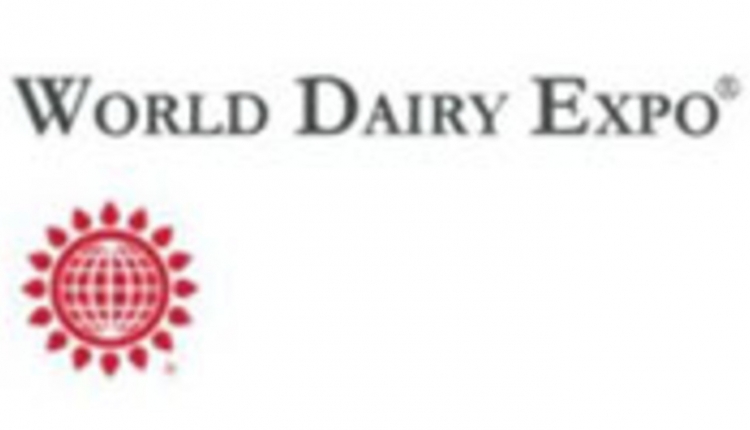The information below has been supplied by dairy marketers and other industry organizations. It has not been edited, verified or endorsed by Hoard’s Dairyman.
Ingredient costs, availability and maintaining the status quo of what’s worked well for you in the past often drive ration decisions. But only using rations that have worked well in the past may result in overlooking opportunities to enhance production or lower cost.
To truly optimize rations and achieve production and efficiency advantages, it’s essential to work with your nutritionist to explore all available ingredient options.
“Rations are formulated by selecting commonly available ingredients and using the ingredients that best support the available forages and meet the cows’ needs,” said Essi Evans, Ph.D., E+E Technical Advisory Services. “If the ingredient options are limited – and potentially limited to only the ingredients you’ve already used – then cows may not get the best possible diet.”
She added, “By opening up the selection of ingredients to include more ingredient options, the nutrient balancing process becomes easier.” For example, evaluate multiple protein sources. If you’re only supplying soybean meal or premium soybean meal products, the selection of additional proteins, such as canola meal, may result in a ration containing the new protein or a mixture of the two proteins that better serves the needs of the herd.
Here are four tips to help you rethink dairy rations and maximize ration efficiency and effectiveness using different ingredients like canola meal:
Have a curious mindset
It’s easy for you and your nutritionist to stay in your comfort zone when it comes to your farm’s rations. But while your ration is good, can it be better and help cows produce more milk and/or lower costs?
“A nutritionist might be hesitant to incorporate an ingredient like canola meal into the ration if they haven’t had experience with it or are unsure how it will perform,” said Dr. Evans. “Let your nutritionist know that you’re open to trying new things and they will not be in trouble if the results are not as good as your previous ration.”
It’s also important for you, not just your nutritionist, to be actively involved in ration decisions and bringing new ideas to the table.
“Ask how your nutritionist balances rations and have them walk you through the process so you can ask questions as to why certain ingredients are included,” suggested Dr. Evans. “Seek out resources that can help you learn more about ration ingredients and share learning with your nutritionist to start a conversation.”
The Canola Meal Dairy Feeding Guide is a great resource for learning more about canola meal, its benefits and how to best incorporate it into dairy rations.
Be flexible in your ingredient choices
Cow nutrient needs are consistent, but the ingredients to meet those needs don’t have to be.
For example, the nutrient makeup of forages differs with season, cut, soil quality, etc. The concentrate part of the ration should also be flexible to get the best results from your farm’s current forage supply.
“By being open and flexible in ingredient choices, you can also be in a better position to adapt to shifts in the market and ingredient availability,” said Dr. Evans. “If you know an ingredient like canola meal works in the diet, you can easily swap it in when it makes sense based on market dynamics and create a more efficient ration.”
Work with your nutritionist to determine what ration ingredients are fixed and which are flexible. Some formulators may always add certain additives, like yeast, vitamins or microminerals. These are important and often do not have a large cost associated with them, nor do they take up significant ration space.
However, other formulators always add specific ingredients at a specific amount, like soybean hulls, almond hulls or beet pulp. These take up more space in the ration, so meeting nutrient requirements becomes more difficult. Dr. Evans suggests flexibility with these ingredients.
Don’t only focus on the low-cost ingredients
Feed formulation programs have an optimization function that allows the formulator to generate a “best cost” ration. The results can be surprising. Sometimes ingredients that cost more per ton meet nutrient needs better at lower inclusion levels than a less expensive ingredient.
For example, soybean meal may cost less per unit of protein than canola meal. However, if a specific nutrient, such as methionine, is limiting, canola meal, which contains greater quantities of that nutrient than soybean meal or distillers’ grains, may be the most economical choice. A limiting nutrient can result in higher ration costs. By having a greater selection of ingredients, even when they may seem costly, may improve outcomes.
“It only takes a bit of time to run different ration scenarios in a ration balancing program’s optimization function to see what your ration might look like with some new ingredient substitutions,” said Dr. Evans. “Talk to your nutritionist about how they use this function and its results.”
Use data to make ingredient decisions
Lastly, consistently gathering and analyzing data helps make trialing new feed ingredients easier.
Not everyone can set up a feed trial in the most ideal, scientific way. However, consistent data points tracked over time to evaluate results from ration ingredient changes allows you to verify the true impact of the change.
“If you’re testing canola meal in the ration, ensure you have metrics for key performance goals prior to the ration change, note the date the ration was adjusted and compare those same metrics before, during and after the ration change,” said Dr. Evans.
She recommends tracking production by cow (not bulk tank) with results taking into account lactation heifers vs. mature cows, stage of lactation (early, mid, late) and, if possible, dry matter consumption.
Ultimately, ingredient flexibility is key to optimizing dairy rations for better performance, efficiency and cost-effectiveness. By working closely with your nutritionist, exploring ingredient options like canola meal, and using data-driven decisions, you can create a ration that supports your herd’s needs while adapting to market changes.
Visit canolamazing.com for more information and to download the Canola Meal Dairy Feeding Guide.
About Canolamazing
Canola meal is a coproduct of canola processing and is approximately 36% crude protein, with a high bypass protein value and amino acid profile well-suited for milk production. Because of its high protein content, canola meal is often used as a protein supplement for animal feeds, including dairy rations. Visit canolamazing.com to learn more.




